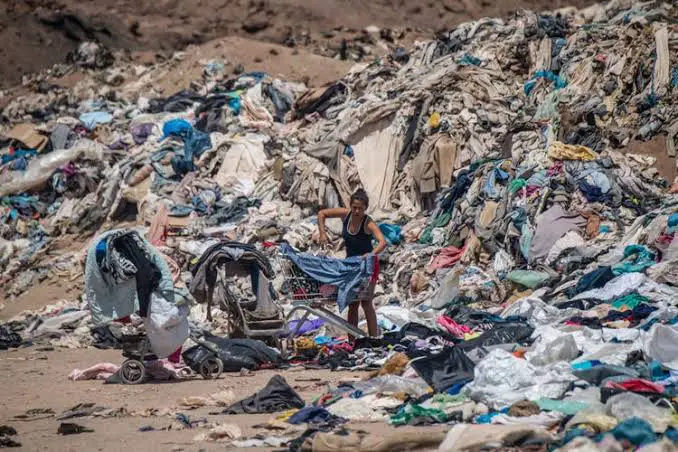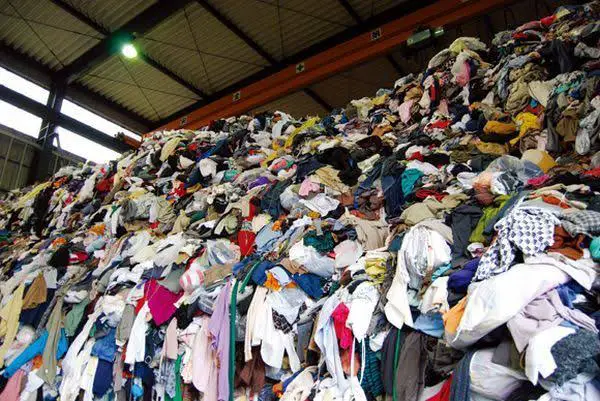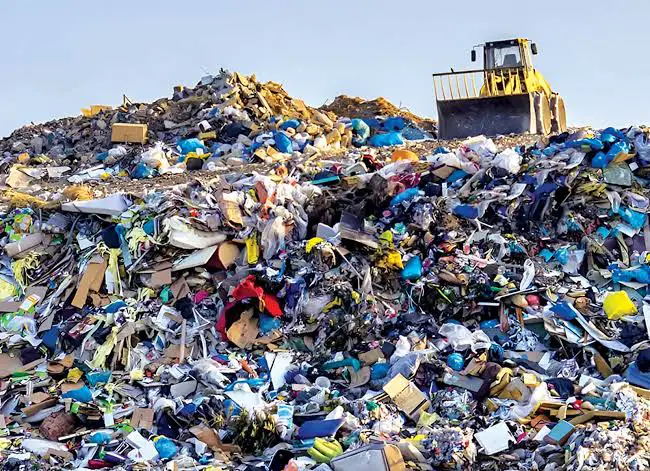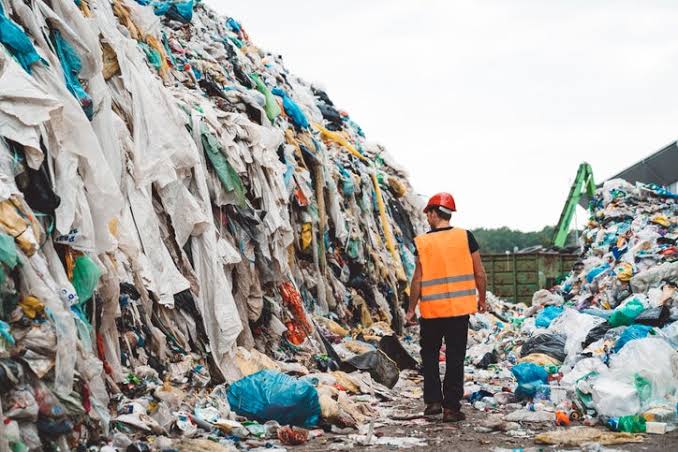Practical Steps to Convert Textiles (Clothing) into Asphalt; Textiles, like clothes and fabrics, can be turned into something surprising. asphalt! Asphalt is the black stuff used to make roads and paths. But how can clothes become asphalt? It’s a bit like magic, but it’s actually science!
First, old clothes are collected. These are clothes that people don’t wear anymore. They might be torn or too small, but instead of throwing them away, they can be recycled. Recycling means turning something old into something new.
After collecting the old clothes, they are sorted. This means separating them into different groups based on their materials. Some clothes are made of cotton, some of polyester, and others of different materials. Each material behaves differently when it’s turned into asphalt, so it’s important to sort them.
Next, the clothes are shredded into tiny pieces. Think of it like tearing paper into little bits. This makes it easier to work with and helps the materials mix together well.
Once the clothes are shredded, they are mixed with other materials. These materials help turn the clothes into asphalt. It’s a bit like baking a cake – you need different ingredients to make it just right. In this case, the ingredients include things like bitumen, which is a sticky substance, and aggregates, which are small rocks.
The mixture is heated up to very high temperatures. This is called ‘hot mix asphalt’. Heating it helps everything blend together and become smooth. It’s like melting chocolate to make it easier to mix into a cake batter.
After heating and mixing, the asphalt is ready to be used. It can be poured onto roads and paths, just like regular asphalt. But now, it’s got a secret ingredient – old clothes! These clothes have been given a new purpose, helping to make the roads we travel on every day.
By turning textiles into asphalt, we can reduce waste and make our roads more sustainable. Instead of throwing away old clothes, they can be reused in a useful way. It’s a small step towards a greener future, where we make the most of what we have and take care of our planet.
Read Also: Practical Steps to Convert Steel Cans Wastes into New Steel Products
Types of Recyclable Textiles (Clothing) and their Uses

here’s a brief overview of some common types of recyclable textiles (clothing) and their potential uses:
1. Cotton: Cotton is a natural fiber that is widely used in clothing. Recycled cotton can be turned into new clothing items, such as t-shirts, jeans, or even towels. It can also be used in non-clothing items like paper products or insulation materials.
2. Polyester: Polyester is a synthetic fiber commonly found in clothing, especially sportswear and outerwear. Recycled polyester can be used to make new garments, such as jackets, fleece sweaters, and athletic wear. It can also be transformed into fibers for carpets, upholstery, and even packaging materials.
3. Wool: Wool is a natural fiber obtained from sheep and other animals. Recycled wool can be spun into yarns and used to create warm clothing items like sweaters, scarves, and blankets. It can also be blended with other fibers to enhance its properties and make it suitable for various applications.
4. Nylon: Nylon is a synthetic fiber known for its strength and durability. Recycled nylon can be used to make a wide range of products, including swimwear, activewear, and outdoor gear like backpacks and tents. It can also be used in automotive parts, industrial fabrics, and carpeting.
5. Denim: Denim is a sturdy cotton twill fabric commonly used in jeans and jackets. Recycled denim can be repurposed into new denim garments, as well as accessories like bags, hats, and even footwear. It can also be used in home decor items like upholstery, cushions, and curtains.
These are just a few examples of recyclable textiles and their potential uses. By recycling old clothing and textiles, we can reduce waste, conserve resources, and minimize the environmental impact of the fashion industry.
How to Convert Textiles (Clothing) into Asphalt

Converting textiles (clothing) into asphalt involves several steps:
1. Collection: First, old textiles and clothing items are collected from various sources such as donation centers, thrift stores, or recycling facilities. These textiles can include garments made from a variety of materials like cotton, polyester, wool, and nylon.
2. Sorting: The collected textiles are sorted based on their material composition. This step is crucial because different materials behave differently when processed into asphalt. Sorting helps ensure that the final asphalt product meets quality standards and performs well.
3. Shredding: Once sorted, the textiles are shredded into small pieces or fibers. This can be done using mechanical shredding machines or other equipment designed for textile recycling. Shredding breaks down the textiles into manageable sizes, making them easier to process further.
4. Mixing: The shredded textiles are then mixed with other materials to create the asphalt mixture. This mixture typically includes bitumen, which is a binding agent, as well as aggregates like sand, gravel, or crushed stone. The textiles are added to the mix to enhance certain properties of the asphalt, such as flexibility and durability.
5. Heating: The asphalt mixture is heated to high temperatures to melt the bitumen and allow for thorough mixing of all ingredients. This process, known as hot mix asphalt production, ensures that the textiles are fully integrated into the asphalt mixture and properly bonded with the other materials.
6. Application: Once the asphalt mixture is ready, it can be applied to various surfaces such as roads, sidewalks, parking lots, and driveways. The application process involves laying down the hot asphalt mixture and compacting it to create a smooth, durable surface.
7. Curing: After application, the asphalt needs time to cool and harden, a process known as curing. During curing, the asphalt undergoes physical and chemical changes that improve its strength and stability. Once fully cured, the asphalt surface is ready for use by vehicles and pedestrians.
The Benefits of Converting Textiles (Clothing) into Asphalt
Converting textiles (clothing) into asphalt offers several benefits:
1. Waste Reduction: By recycling old textiles, we reduce the amount of clothing ending up in landfills. Textile waste is a significant environmental problem, and recycling it into asphalt helps divert materials from overflowing landfills, conserving valuable space and reducing pollution.
2. Resource Conservation: Recycling textiles conserves natural resources by reducing the need for virgin materials in asphalt production. Instead of relying solely on traditional asphalt ingredients like aggregates and bitumen, recycled textiles can be used as a supplementary material, helping to preserve resources like gravel, sand, and crude oil.
3. Energy Savings: The process of converting textiles into asphalt requires less energy compared to producing asphalt from scratch. Recycling textiles consumes fewer resources and emits fewer greenhouse gases, contributing to overall energy savings and reducing the environmental impact of asphalt production.
4. Improved Asphalt Performance: Incorporating recycled textiles into asphalt can enhance the performance and durability of pavement surfaces. Textiles add flexibility and elasticity to the asphalt mixture, making it more resistant to cracking and fatigue under heavy traffic and changing weather conditions. This results in longer-lasting roads and reduced maintenance costs over time.
5. Versatility: Recycled textiles can be used in various types of asphalt applications, including roads, highways, parking lots, and pedestrian pathways. Their versatility allows for flexible use in different projects, providing sustainable solutions for a wide range of infrastructure needs.
6. Environmental Benefits: Converting textiles into asphalt helps reduce the environmental footprint of both the textile and asphalt industries. By promoting circular economy practices and sustainable resource management, we can minimize waste generation, lower carbon emissions, and mitigate the environmental impacts associated with textile production and disposal.
Overall, converting textiles into asphalt offers a win-win solution for waste management, resource conservation, and infrastructure sustainability. By harnessing the potential of recycled textiles, we can create more resilient, eco-friendly pavement systems that benefit both people and the planet.
The Uses and Benefits of Recycled Asphalt
Recycled asphalt, also known as reclaimed asphalt pavement (RAP), offers various uses and benefits:
1. Sustainable Resource Management: Recycling asphalt reduces the need for virgin materials such as aggregates and bitumen, conserving natural resources like gravel, sand, and oil. By reusing existing materials, we minimize the extraction of raw materials and decrease the environmental impact of asphalt production.
2. Cost Savings: Using recycled asphalt can be more cost-effective than producing new asphalt from scratch. Reclaimed asphalt pavement is often less expensive to acquire and process than virgin materials, leading to significant cost savings for construction projects and road maintenance activities.
3. Environmental Conservation: Recycling asphalt helps mitigate the environmental impacts associated with traditional pavement construction. It reduces energy consumption, lowers greenhouse gas emissions, and decreases landfill waste, contributing to overall environmental conservation and sustainability.
4. Improved Pavement Performance: Recycled asphalt can provide comparable or even superior performance to conventional asphalt mixtures. Incorporating reclaimed asphalt pavement into new asphalt mixtures enhances properties such as durability, strength, and resistance to cracking, rutting, and moisture damage. This results in longer-lasting roads and reduced maintenance requirements over time.
5. Versatility: Recycled asphalt can be used in a variety of applications, including road resurfacing, patching, and base layers for new pavement construction. It can be processed and mixed with other materials to meet specific project requirements, offering flexibility and versatility in pavement design and implementation.
6. Rapid Installation: Reclaimed asphalt pavement can be easily processed and incorporated into asphalt mixtures, allowing for faster construction and installation compared to traditional paving methods. This accelerates project timelines and minimizes disruptions to traffic and surrounding communities.
7. Enhanced Sustainability Credentials: Using recycled asphalt demonstrates a commitment to sustainable practices and green building initiatives. It contributes to LEED (Leadership in Energy and Environmental Design) certification points and other sustainability rating systems, helping organizations meet their environmental goals and requirements.
Overall, the uses and benefits of recycled asphalt extend beyond cost savings to include environmental stewardship, improved pavement performance, and enhanced sustainability credentials. By embracing recycled materials in pavement construction, we can create more resilient, eco-friendly infrastructure that meets the needs of present and future generations.
Read Also: Practical Steps to Convert Aluminum Cans Wastes into Appliances
The Challenges of Converting Textiles (Clothing) into Asphalt and their Solutions

Converting textiles (clothing) into asphalt presents several challenges, along with potential solutions:
1. Material Contamination: Textiles collected for recycling often contain contaminants such as zippers, buttons, and other non-textile components. These contaminants can interfere with the asphalt production process and affect the quality of the final product.
Solution: Implementing strict quality control measures and pre-processing techniques to remove contaminants before shredding the textiles. This can involve manual sorting, automated sorting technologies, and magnetic separators to separate metal components.
2. Material Consistency: Textiles come in a variety of materials, blends, colors, and thicknesses, which can affect the consistency and performance of the asphalt mixture. Achieving uniformity in the properties of the recycled textiles is crucial for producing high-quality asphalt.
Solution: Developing standardized sorting and blending processes to ensure consistent material characteristics across batches. This may involve mixing different types of textiles to achieve the desired properties and testing the asphalt mixture to verify performance.
3. Asphalt Compatibility: Not all textiles are suitable for use in asphalt mixtures due to differences in material properties and behavior during processing. Some textiles may not blend well with asphalt or may adversely affect the performance of the pavement.
Solution: Conducting extensive research and testing to identify compatible textile materials and optimize asphalt mix designs. This may involve evaluating the impact of different textile fibers, blends, and processing methods on the properties of the asphalt mixture.
4. Performance Requirements: Asphalt pavements must meet specific performance requirements related to durability, strength, fatigue resistance, and deformation behavior. Incorporating recycled textiles into asphalt mixtures without compromising performance can be challenging.
Solution: Conducting performance testing and field trials to assess the effects of recycled textiles on asphalt performance under various conditions. This may involve testing the asphalt mixture’s mechanical properties, moisture susceptibility, and aging characteristics to ensure compliance with industry standards.
5. Regulatory Compliance: Recycling textiles into asphalt may be subject to regulatory requirements and environmental standards governing waste management, material recycling, and pavement construction.
Solution: Collaborating with regulatory agencies, industry stakeholders, and research institutions to develop guidelines and best practices for recycling textiles into asphalt. This may involve conducting environmental assessments, obtaining permits, and complying with relevant regulations to ensure legal and ethical compliance.
Frequently Asked Questions (FAQs) About How to Convert Textiles (Clothing) into Asphalt
1. Q: How are textiles (clothing) converted into asphalt?
A: Textiles are first collected and sorted based on their material composition. They are then shredded into small pieces and mixed with other asphalt ingredients such as bitumen and aggregates. The mixture is heated to high temperatures, creating a hot mix asphalt that can be used for paving roads and other surfaces.
2. Q: What types of textiles can be used in asphalt production?
A: Various types of textiles can be used, including cotton, polyester, wool, nylon, and denim. These textiles are typically collected from old clothing items that are no longer wearable or wanted.
3. Q: What are the benefits of converting textiles into asphalt?
A: Converting textiles into asphalt helps reduce waste by recycling old clothing items. It also conserves natural resources, saves energy, and improves the performance of asphalt pavement. Additionally, it supports sustainable practices and reduces the environmental impact of textile and asphalt production.
4. Q: How does recycled asphalt perform compared to traditional asphalt?
A: Recycled asphalt can provide comparable or even superior performance to traditional asphalt. It offers enhanced durability, strength, and resistance to cracking and fatigue. Using recycled asphalt can result in longer-lasting roads and reduced maintenance costs over time.
5. Q: Is recycled asphalt safe for the environment?
A: Yes, recycled asphalt is safe for the environment. By recycling textiles and other materials, we reduce the need for virgin resources and minimize waste sent to landfills. Recycling asphalt also helps lower greenhouse gas emissions and conserves energy compared to producing new asphalt from scratch.
6. Q: Can recycled asphalt be used for all types of pavement projects?
A: Yes, recycled asphalt can be used for various pavement projects, including roads, highways, parking lots, and pedestrian pathways. It offers versatility and flexibility in pavement design and construction, making it suitable for a wide range of applications.
7. Q: Are there any challenges to converting textiles into asphalt?
A: Yes, some challenges include material contamination, consistency, compatibility with asphalt, meeting performance requirements, and regulatory compliance. However, these challenges can be addressed through proper sorting, testing, and collaboration with industry stakeholders and regulatory agencies.
Read Also: Black Cat Breeds Description and Complete Care Guide

